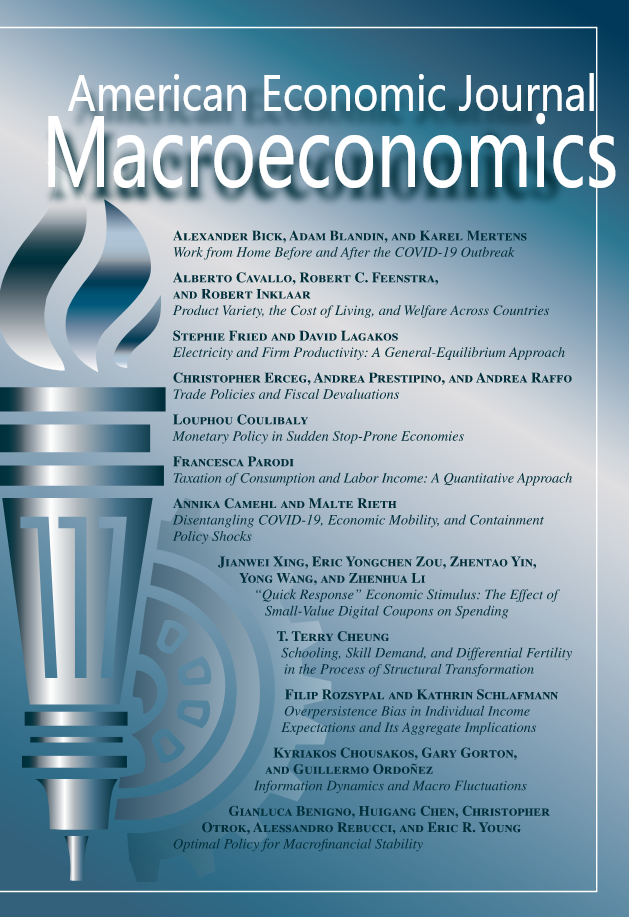在COVID-19爆发前后在家工作
IF 5.7
1区 经济学
Q1 ECONOMICS
引用次数: 0
摘要
根据新的调查数据,我们记录了在COVID-19大流行期间在家工作(WFH)的持续上升。利用理论和直接调查证据,我们认为,这一增长的四分之三反映了对许多工人来说可能是永久性的新工作安排的采用。与调查数据相匹配的定量模型预测,大流行后全职工作的工人是大流行前的两倍,每五个工作日而不是七个工作日中就有一个工作日是全职工作的。这些模型预测与员工对未来工作满意度的期望的调查证据是一致的。(j12, j18, j22, m54)本文章由计算机程序翻译,如有差异,请以英文原文为准。
Work from Home before and after the COVID-19 Outbreak
Based on novel survey data, we document a persistent rise in work from home (WFH) over the course of the COVID-19 pandemic. Using theory and direct survey evidence, we argue that three-quarters of this increase reflects the adoption of new work arrangements that will likely be permanent for many workers. A quantitative model matched to survey data predicts that twice as many workers will WFH full-time postpandemic compared to prepandemic, and that one in every five instead of seven workdays will be WFH. These model predictions are consistent with survey evidence on workers’ own expectations about WFH in the future. (JEL I12, I18, J22, M54)
求助全文
通过发布文献求助,成功后即可免费获取论文全文。
去求助
来源期刊

American Economic Journal-Macroeconomics
ECONOMICS-
CiteScore
8.20
自引率
1.70%
发文量
58
期刊介绍:
American Economic Journal: Macroeconomics focuses on studies of aggregate fluctuations and growth, and the role of policy in that context. Such studies often borrow from and interact with research in other fields, such as monetary theory, industrial organization, finance, labor economics, political economy, public finance, international economics, and development economics. To the extent that they make a contribution to macroeconomics, papers in these fields are also welcome.
 求助内容:
求助内容: 应助结果提醒方式:
应助结果提醒方式:


